By Josh Wayner
Editors Note : Caution, Reloading can be very dangerous, read our “Reloading Disclaimer“.
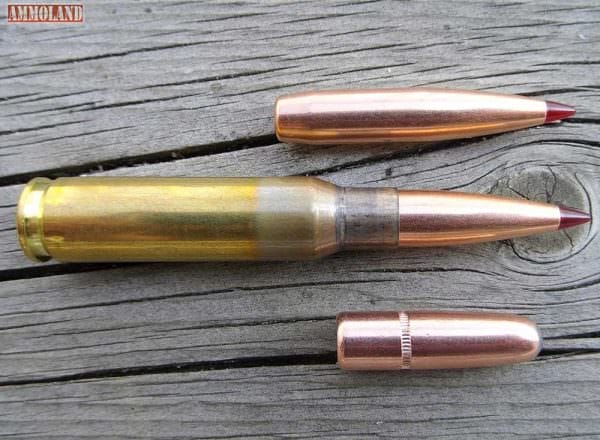
USA – Understanding the principles of making subsonic ammunition takes time and a bit of creativity. I got into the game of subsonic shooting a few years back when I was debating taking a dive into suppressor ownership. Despite the fact that I never actually got a can, I learned a great deal about what it takes to not only make subsonic ammunition work in a rifle but some tips and tricks for maximizing your gear and reloading economy.
There are two things that we’re looking for when we get into the subsonic game. First, it is obviously a working velocity below the speed of sound. This may seem like a no-brainer, but it is my belief that truly functional subsonic ammunition needs to always be under the speed of sound, not flirting with it.
As a result, I have found that a velocity of 1050fps at the muzzle is a nearly optimum speed for any condition range. Granted, you may pick up or lose some speed given external variables, but fear not as there isn’t that big of a difference in performance at the effective range of most subsonic cartridges.
The second thing to concern yourself is one that often escapes people: bullet stability. The projectile must be able to stabilize in subsonic flight in order to be accurate. Again, seems like a no-brainer but I’ve seen many guys load subsonic that keyhole at 100 yards or less. You don’t want that to happen with an expensive suppressor attached.
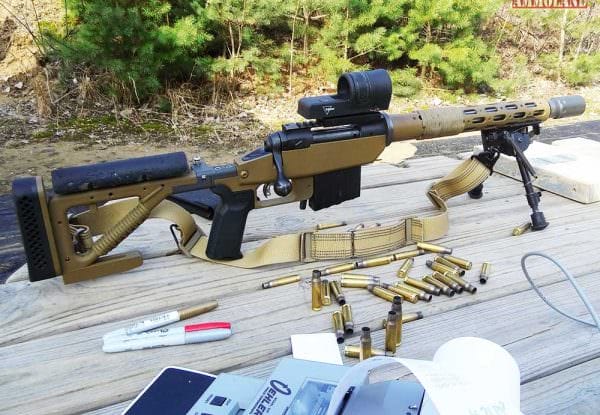
For this article I’ll be using .308 Win ammunition in a bolt action as my example as it is easily made subsonic and is a good cartridge to begin working with.
Why not a semiauto .300 Blackout? I’m using the .308 in a bolt gun because it allows more linear testing without the variable of cycling pressure and gas bleed-off. In short, I’m using something that simply launches bullets in order to remove obstructions that could cause error.
The rifle I have has a 13.5” barrel with a 1:10 twist. This twist rate is common to many .308/7.62 rifles and is in my opinion the most versatile twist rate available for any .30 caliber bore.
Why not a 1:12? Easy. I’ve found that the 1:12 twist rate isn’t fast enough to stabilize most projectiles moving at subsonic speeds. You are almost guaranteed a keyhole from a 1:12 bore.
The tighter twist rate enables the slow-moving bullets to gain a bit more gyroscopic stability in flight and this is a huge thing when we’re dealing with low pressures and short ranges.
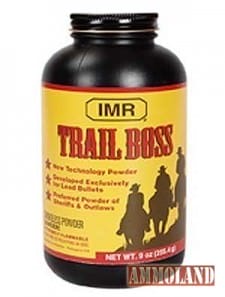
In this test I’ll be loading several bullet options from Hornady and I’ll be using the premier subsonic powder on the market: IMR Trail Boss Powder. Trail Boss (TB) was originally designed to work in cowboy action cartridges like .38 Special and .45 Colt. I load lots of .38 with Trail Boss and love how it works. The kernels of powder look like little Cheerios at first glance. This powder is suited to .308 because it is made to take up lots of internal space inside the case. Fifteen grains of TB is enough to nearly fill a .308 case. What this provides is an even and consistent cartridge ignition.
Other pistol powders will not fill the case and this can result in erratic velocities or dangerous pressure curves.
There are several schools of thought when it comes to picking the right bullets for subsonic use. Most are familiar with the use of heavy match bullets in the .300 Blackout and rightfully so. The 1:7 or 1:8 twist rates of the .300 Blackout offer themselves to reliable and accurate performance with a truly massive range of bullet weights.
The bullets I’ll be using are the new Hornady ELD Match 225gr and the more traditional 180gr RN Interlock. These bullets each represent an extreme on the scale of shape and performance. The 180gr RN is a fairly archaic design and would be right at home in vintage .30-03 loadings dating back over one hundred years while the 225gr ELD bullet represents the very cutting edge of projectile technology in our current age. So which one will fare better at the same speed?
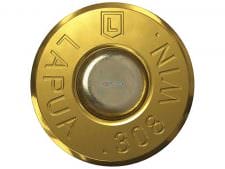
Since our target velocity is 1050fps, I began load development starting high and working my way down. Yes, you read that right. Starting high ensures that you know the ceiling of your loads given that there is a danger of getting a bullet stuck in the barrel if you start too low.
It is far better to reduce a load from 1200fps to 1050 than to start out at 600fps and accidently blow your gun up.
The information below is only for your reference. This information is solely for my rifle and my reloading setup. You will doubtlessly experience problems if you use my data in a rifle with a longer or shorter barrel. I loaded all rounds to feed from an Alpha Mags AICS pattern magazine.
I began with some preliminary research into some reloading manuals and internet forums. I’m always careful to believe what is in either for different reasons. With a rough idea in mind, I started the process with neck-sized Lapua Rifle Brass. I decided it best to test my hand loads with both standard and magnum primers to see if there were any differences in velocity or consistency. Many people drill out their primer flash holes, but I’ve found this to be unnecessary and a hassle to inexperienced reloaders. Primers used in the test were CCI #200 Large rifle and Winchester 9 ½ Magnum.
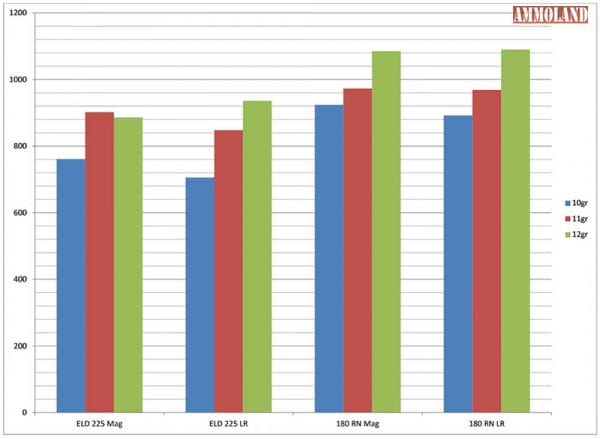
I started the 180gr loads seated to the cannelure with 12, 11, and 10 grains of TB. I made three each with standard and magnum primers. I could’ve started a bit hotter with 13 or even 14 grains for this bullet, but I decided to keep it standard when compared to the 225gr bullets.
Because of the length of the 225gr bullet, I became concerned with the available space inside my Lapua brass. I originally wanted to start with 13gr of TB, but I heard crunching when I seated the bullets to mag length. This is a huge problem if you’re using TB, as it should not be compressed at all. As such, I decided it best to use the same charge weights as the 180gr load. Just like I mentioned earlier, three of each charge weight were loaded with both magnum and standard primers.
Loads were tested using an Oehler 35P chronograph at a distance of five feet from the muzzle. Weather conditions were pleasant at 50 degrees Fahrenheit. The loads were tested for both accuracy, stability, and velocity at a proving range of 25 yards and for accuracy only at 100 yards.
My data gave me a bit of a surprise because my starting loads of 12gr were pretty darn close to what I was looking for. It isn’t often that I get my way right off the bat, so I was pretty happy with the results. The 180gr load with 12gr of TB gave me an average of about 1090fps. This was close enough to my intended goal of 1050 that I decided to call it good. Not to waste a good day at the range, I fired the rest for data and received interesting results.
I found that there was no discernible correlation between velocity and standard vs. magnum primers. What I did discover about the primers was that there was a difference in regard to accuracy. I suspect that the magnum primers allow for a more consistent powder burn due to the increased flash duration. The magnum primer load in the 180gr/12gr load was substantially more accurate at 100yds than the standard LR primer variation. I managed to group impressively at 100 yards using a Trijicon Reflex sight. This isn’t an ideal optic for shooting groups from a precision rifle, but I expect that I wouldn’t have done all that much better using a magnified scope.
The 180gr/12gr loads shot about 1 MOA at 100 yards and showed no signs of keyholes or tumbling. Good enough for me.
I noticed instability in the 225gr loads in the appearance of deformed entry holes at both 25 and 100 yards. The twist rate was fast enough to be accurate by most standards, but the velocity just wasn’t there while using TB and a 13.5” barrel. The fastest I got the 225gr bullet going was a load average of 936fps while at max case capacity. I suspect that I could indeed get a faster and better load out of the 225 ELD if I loaded the bullet longer and added more powder in the newly freed space in the case, but that would defeat the purpose of having a magazine-fed rifle.
Getting subsonic loads to function in your rifle can be both fun and frustrating. As I learned from my testing, getting a functional load isn’t hard to do, but care must be taken to ensure proper safety, accuracy, and reliability. The last suggestion for subsonic loads: don’t just start the loads high, make sure you take aim high.
About Josh Wayner:
Josh Wayner has been writing in the gun industry for five years. He is an active competition shooter with 14 medals from Camp Perry. In addition to firearms-related work, Josh enjoys working with animals and researching conservation projects in his home state of Michigan.

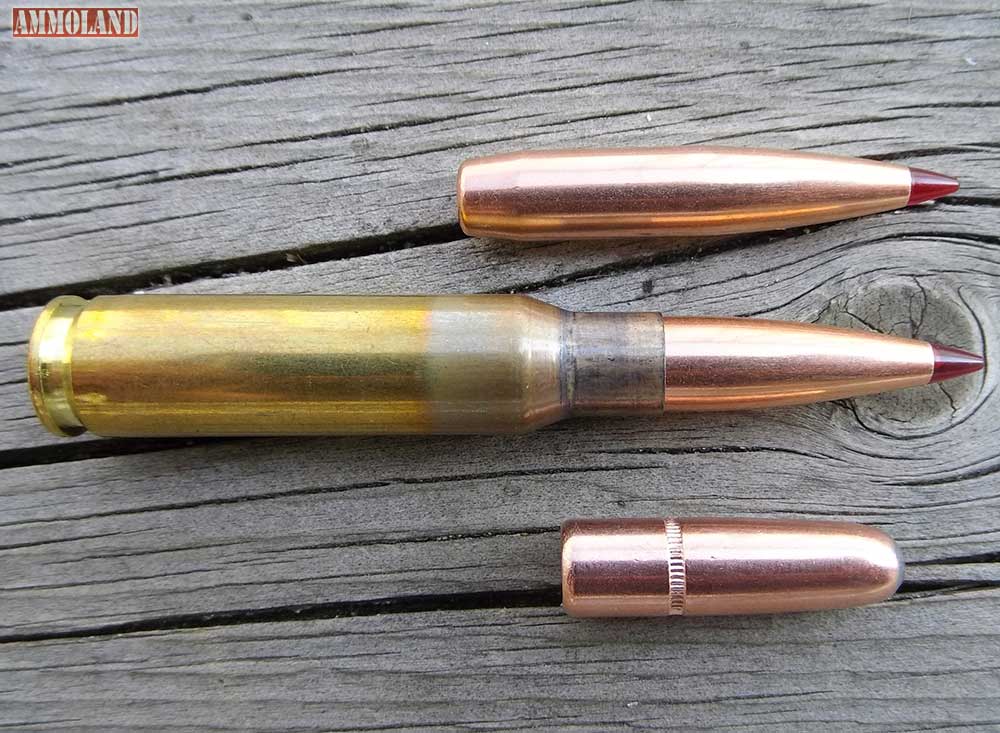


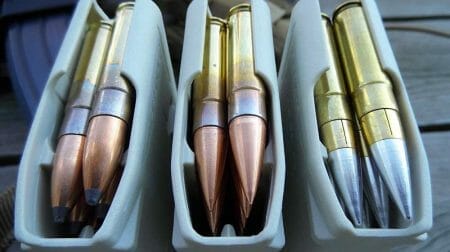

I just bought a new bike. Is Geico or Progressive the insurance company owned by Soros? I don’t want to by insurance from his company.
I have been using USSA for 25 years and I am not even sure about them anymore. According to ‘The Great Reset’, almost all insurance companies are part of the ‘woke’ culture now and supporting myriad parts of the upcoming war on conservatives. In some ways you can’t blame them as they are mostly beholding to big money to keep them in business. It is sort of a pay to play program.
Yep, we have that for our normal cars and trucks, too.
USAA can suck A$$. As a veteran with a clean driving record they didn’t want to insure me in the past. Then a couple years ago. I had one of their clients run into me. All caught on video. The driver even admitted his wrong. I had just put $7,000.00 in my work vehicle & they wanted to pay me $1395.00 even after submitting receipts to them. Next phase would be court. Who the hell has time & resources for that ? I would have lost more money than the return I would have received.As far as the Ins. company… Read more »
Yeah, motorcycle.
That is hilarious!!!
Sounds like there was something odd afoot!
Warren Buffett purchased about half of GEICO’s stock over the course of a few decades leading up to 1996, when he purchased the remaining half of the company. 9 GEICO was just one of Buffett’s insurance deals, having first purchased National Indemnity in 1967.
Ok! So if Buffet owns Geico, then Soros can not own Geico.
Actually they can both own Geico – both shareholders.
“Warren Buffett purchased about half of GEICO’s stock over the course of a few decades leading up to 1996, when he purchased the remaining half of the company.”
There are only two halves. Math challenged or reading challenged?
Dear Oathbreaker. I addressed your lame statement, not some other statement. Try logic.
They can not “… both own Geico – both shareholders.” because Buffet bought both halves. Math challenged or reading challenged … or BOTH.
Who cares? It’s all deflection from your hatred of civilians and defense of Oathbreakers.
You are the one that wrote, for everyone to see, and laugh at, that both could own the company. I merely pointed out that Buffet had bought both halves.
Definitely don’t go with Progressive. Lib donations a plenty.
Thus the name “Progressive”!
Why Reinvent the wheel? if you have a great 308 and have it sighted in with traditional supersonic loads, it’s good don’t mess with it. Heavy sub- sonics, hit like a brick, and drop like a brick. Buy a bolt action 300 blackout threaded barrel, Suppress it, load with the Hornady sub-X bullets @ at approx.1050. They expand, i think down to -900 fps. Get it to group sub- moa (if possible). They sound like, or less than, a pellet gun. There is more noise from the dirt berm impact than the gun. Good bullet placement most important with subsonic… Read more »
The bigger trick than finding a load that will be a stable/safe subsonic is finding one that will cycle your rifle. I can fire subs in my FAL just fine but it turns it into a bolt action rifle rather than a semiauto. No amount of gas adjusting will get it to fully cycle.
before ar 15 craze they were the gun to have. I have a keltec that uses metric fal mags the fal needs a silencer to run subsonic ammo they were nato 7.62×51 guns used before they adopted 5.56 (remember we dropped m14) google it you may have seen one oldschool
I just found this today. Your work was very helpful. I only wish I would have started here. I contemplated the 308 load and thought I would use a heavy projectile for white tail. (To clear up why we are using suppressed, subsonic loads, We provide charity hunts for young individuals with disabilities. We hunt with suppressors in enclosed blinds and need to be in clear communication with our guests.) Factory subsonics have not always been subsonic in our rifles (savage 110 tactical) so spent past 3 days and over 100 rounds trying to get an accurate 220 gn load.… Read more »
I came across this article while searching for .308 Win subsonic loads for my AR10. 1:10 twist 18″ barrel. I have Hornady Match 208gr. BTHP I bought for 300BLK subsonic and got to thinking maybe load up a few for the AR10. I also happen to have Trail Boss for .223 subsonic. I built the rifle from the PSA kit a couple years ago. 80% polymer lower. and a mix of LPK parts from PSA and Polymer80. https://palmettostatearmory.com/psa-pa10-18-ss-mid-length-rifle-kit.html But I customized it by using a low profile gas block quad rail handguard and a MagPul MOE stock, and a Nikon… Read more »
11.0 to 11.3 gr. Trail Boss (hard to measure exact with my scale) with Hornady 208gr. BTHP are subsonic in my AR10. No supersonic crack. Did not bother with the Chrono, guessing somewhere 1000 to 1050 FPS. Obviously did not cycle. Just a test, these rounds more suited to a bolt action rifle. 5 rounds just for testing.
QuikLOAD said 1168 FPS calculated, but it has been consistently high by about 100+ FPS for low power loads.
I did the same thing in a 30-06 with good results. I use a 220 gr cast for a couple of reasons though some 220 gr jacketed are used. Trail Boss is excellent for that. A 30-06 because it is so flexible
Nice work
I would like to see more articles on reloading & where to score up to date deals on components, if possible.
Gallery load for 303 is a large pistol primer with 2.5 to 3.5 of WW-231 covered with a .5 g of Dacron pillow stuffing and a 32 cal. hbwc. Plenty quiet, plenty accurate. Good for feral animals and close range, 50 yds. or less, target shooting. DON’T FORGET THE DACRON FILL, it keeps the powder on the primer and stops misfires. With a bit of experimenting this will work for most any 308 to 32 cal. ctg. Have fun and be safe.
Arm up and carry on
11.5 gr with a 180 gr is my go to load for this; been loading it for years. If you want to up your game try it with a lil wire pull jell in the can.
Great article. Any suggestions to replacing TrailBoss?
Red dot is decent, so is Tinstar N32 I think.
Been loading a lot of my cowboy rounds with Tinstar and it works pretty good. Still using Trailboss for most of my hunting needs(going to be like 10+ years at this point, not a huge fan of changing my hunting gear at all :D.
Can you not find Trail boss around or just not a fan?
I want to create a subsonic round for my 300WM. My gunsmith said sometimes too light a load can blow up a gun due to too much empty space in the cartridge. Is that true? I saw on another website a guy who added synthetic stuffing that looks like cotton to take up the empty case. Is that a good idea and safe? Wouldn’t the residue from the stuffing create a residue in the barrel?
Subsonic loads in a 300WM would be a waste of time to be honest with you. There are better cases to use. Yes you can use a filler material but you’re still shooting a 30 caliber bullet at the same speed. A the writer says without a suppressor it’s a moot point. If you buy a suppressor and want to shoot subs then buy/build a dedicated sub gun. 300 blackout 1-8 or 1-7 twist AR or bolt gun. Just my two cents. I own both.
Light loads are best developed with a high density powder such as ADI Trailboss. This allows you to fill the case (little or no air space) and still achieve the velocities you want. If you want to use a case filler to use light loads with other powders, you can use either dacron fibre or corn flour. Neither leave a residue, both achieve the desired results and won’t affect your accuracy potential. I have used both successfully, however my preference is now to fill the case with a high density powder. In .308, I have achieved two excellent subsonic loads… Read more »
Any suggestions for a Nosler 210 gr Accubond? How much Dacron would put in the cartridge? How tight would you pack it? Do you prefer Dacron or corn flower ?
I think you meant to write “low density” not “high density.”
The “detonation” myth has been around for quite some time. I have been handloading for many different rounds for fifty years and never encountered it personally or known anyone personally who it has happened to. The only “high pressure event” that I have encountered, and had read about before it happened to me was using Blue Dot (the original Blue Dot) in temperatures below 32 degrees in a magnum handgun round. After it happened I took the remaining rounds of that batch of rounds home and pulled the bullets and weighed the power and they were all what they were… Read more »
I’ve developed some superbly accurate loads for 303 using trail boss (15.1 gns) and 124 gn .311 projectiles, also 90 grain .32 calibre pistol projectiles (.311), neither load is subsonic, but recoil is almost zero, and these both work beautifully through a suppressor.
That rifle barrel length and aiming device didn’t seem like a good choice at all for this test. But it was still pretty interesting.
I have 180 grain Sierra bullets and am thinking about trying the Trail Boss at 12 grains for a subsonic load. Some have said to load the TB to the bottom of the bullet for max and 70% of that for starting load. I am thinking the 12 grain load is a safer point as I do not want to stick the bullet…
A little off subject. I used reduced loads in a 30-06 once with 100 gr. SJ bullets to hunt squirrel’s once after reading it worked. First squirrel exploded so badly I could only find bits and pieces of it. Just saying. ha ha
I had purchased (500) 110gr .308 cal, copper-coated bullets, designated by the manufacturer as “.30 Carbine” bullets; however, they would not feed in my two USGI carbines, regardless of seating depth (wrong ogive shape). I, therefore, decided to try them as low-velocity reloads (for practicing sight alignment & trigger control) in my .308 Win Savage 110, using Trail Boss (12 gr). Since I was shooting “standard” reloads at the range, at the same time I tried (5) rounds of 110gr/12gr TrailBoss rounds, I didn’t reset the scope, and I didn’t have my chrony to measure velocity. The (5) rounds naturally… Read more »